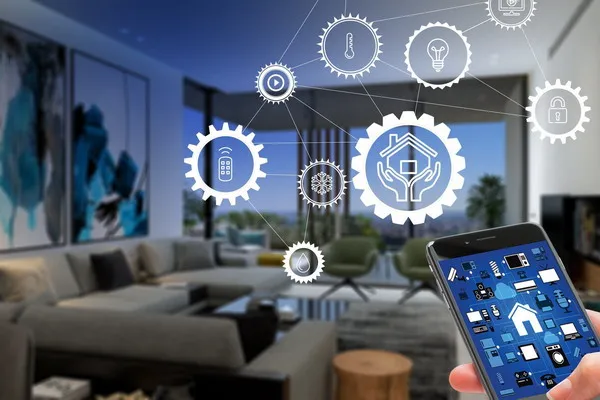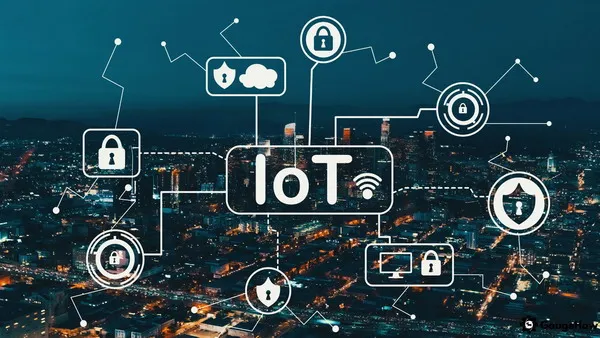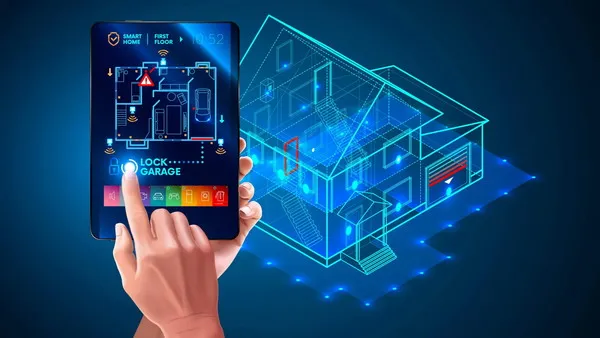The Internet of Things (IoT) has revolutionized the way we interact with our surroundings, particularly within our homes. By 2026, IoT home devices are set to transform domestic life, providing unprecedented levels of convenience, efficiency, and security. This article explores the trends, key devices, impacts, challenges, and future prospects of IoT home devices as we look towards 2026.
Trends in IoT Home Devices for 2026
As we move towards 2026, several trends are shaping the landscape of IoT home devices:
Increased Interconnectivity and Smart Integration: IoT devices are becoming more interconnected, creating a seamless and integrated smart home ecosystem. Homeowners can expect enhanced interoperability between devices from different manufacturers, thanks to standardized communication protocols and platforms. This trend allows for a more cohesive and efficient smart home experience.
Advanced AI and Machine Learning Capabilities: Artificial Intelligence (AI) and Machine Learning (ML) are driving significant advancements in IoT home devices. These technologies enable devices to learn from user behavior and preferences, offering personalized experiences and predictive functionalities. For example, smart thermostats can predict optimal temperature settings based on past usage patterns and external weather conditions.
Improved Security and Privacy Measures: With the growing number of connected devices, security and privacy have become paramount concerns. IoT home devices in 2026 are expected to feature advanced encryption protocols, multi-factor authentication, and robust user privacy controls to protect against cyber threats and data breaches.
Key IoT Home Devices of 2026
Several IoT home devices are set to become indispensable by 2026:
Smart Home Hubs and Assistants: Smart home hubs and virtual assistants, such as Amazon Echo and Google Home, will continue to evolve. These devices will offer enhanced voice recognition, natural language processing, and integration with a wider range of smart home products. Users can expect more intuitive interactions and comprehensive control over their smart home ecosystems.
Smart Appliances: Innovations in smart appliances will make household tasks more efficient and convenient. Smart refrigerators will feature inventory tracking and automated grocery ordering, while smart ovens will provide recipe suggestions and precise cooking instructions. Washing machines will offer customized washing cycles based on fabric type and stain level.
Smart Lighting and Climate Control: Energy efficiency and advanced control features will define smart lighting and climate control devices. Smart lighting systems will offer dynamic lighting adjustments based on time of day and user activity. Smart thermostats will provide granular control over heating and cooling, ensuring optimal comfort and energy savings.
Home Security and Surveillance Systems: Enhanced security features, such as facial recognition and AI-based monitoring, will make home security systems more reliable and effective. Smart locks will offer remote access control, while surveillance cameras will provide real-time alerts and detailed analytics.
Impact on Daily Life
The proliferation of IoT home devices in 2026 will significantly impact daily life in several ways:
Convenience and Efficiency: IoT devices streamline daily routines by automating tasks and providing seamless control over home environments. From automated lighting to smart appliance management, these devices save time and effort, allowing homeowners to focus on more important activities.
Cost Savings: Energy-saving devices, such as smart thermostats and lighting systems, contribute to significant cost savings. By optimizing energy usage and reducing wastage, homeowners can lower their utility bills and enjoy long-term financial benefits.
Health and Well-being: IoT devices promote health and well-being by offering features such as air quality monitoring, smart fitness equipment, and health tracking devices. These technologies enable users to maintain a healthier lifestyle and monitor critical health metrics in real-time.
Challenges and Considerations
Despite their numerous benefits, IoT home devices come with challenges that need to be addressed:
Security Concerns: The interconnected nature of IoT devices makes them vulnerable to cyber attacks. Manufacturers must prioritize security by implementing robust encryption, regular software updates, and user education on safe practices.
Data Privacy: With the vast amount of data generated by IoT devices, ensuring data privacy is crucial. Companies must adopt stringent data protection measures and provide transparent policies on data usage and storage to build user trust.
Compatibility and Standardization: The lack of standardization among IoT devices can lead to compatibility issues. Industry-wide standards and protocols are necessary to ensure seamless integration and interoperability between devices from different manufacturers.
Future Prospects and Innovations
Looking beyond 2026, several emerging technologies and trends are set to shape the future of IoT home devices:
Emerging Technologies: Technologies such as edge computing, 5G connectivity, and blockchain will play a pivotal role in the evolution of IoT home devices. Edge computing will enable faster data processing and reduced latency, while 5G connectivity will provide higher bandwidth and improved device communication. Blockchain technology will enhance security and data integrity by providing decentralized and tamper-proof data storage.
Predictions for Market Growth: The market for IoT home devices is expected to grow exponentially. According to industry forecasts, the global IoT market will reach new heights, driven by increasing consumer demand for smart home solutions. The adoption of IoT devices will be fueled by advancements in technology, affordability, and the growing awareness of their benefits.
Conclusion
IoT home devices are set to revolutionize the way we live by 2026. From smart home hubs to advanced security systems, these devices offer unparalleled convenience, efficiency, and security. While challenges such as security and data privacy need to be addressed, the future of IoT home devices looks promising. As technology continues to evolve, IoT home devices will become an integral part of our daily lives, transforming our homes into smarter, more efficient, and more secure environments.





